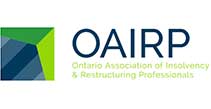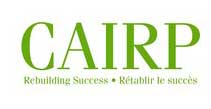One of the early warning signs of financial difficulty is your “Total Debt Service Ratio” exceeds 40% of your income.
Debt and Debt Ratios
One of the early warning signs of financial difficulty is your Total Debt Service Ratio exceeds 40% of your total monthly income.
Banks and other institutions often use the “Total Debt Service Ratio” (TDSR) to determine if you have the capacity to make payments on a loan or mortgage. The Total Debt Service Ratio is the percentage of your income that’s needed to cover all of your monthly debt payments.
Where the ratio exceeds forty (40) percent of your total monthly income, you could be carrying too much debt and are at risk of bankruptcy or financial insolvency.
Calculating Your Debt Ratio
A debt ratio is calculated by adding up all of your monthly expenses and then dividing that amount by your income to arrive at a percentage. That percentage will be the “Debt Ratio”, for example:
- total bills $2,000
- total income $4,000
- 2,000 divide by 4,000 = .5
- .5 x 100 = 50%
The debt ratio in this example is fifty (50) percent. Here is a more realistic example:
| Expense | Amount |
|---|---|
| Mortgage or Rent | $1600.00 |
| Property tax & Condo Fees | $300.00 |
| Heating Costs | $150.00 |
| Car Loan or Lease | $500.00 |
| Credit Card Payments | $350.00 |
| Line of Credit Payments | $300.00 |
| Student Loan Payments | $150.00 |
| Total Monthly Debt Payments | $3350.00 |
| Divide by Gross Monthly Income (Income before Taxes) | $6000.00 |
| Equals = Debt Ratio | 52% |
A debt ratio of 52% is considered very high and you probably wouldn’t be approved for any additional loans or unsecured credit.
High Debt Ratios
Banks use these ratios and debt calculations as a lending tool, but even if your Total Debt Service Ratio is below 40%, it may still be too high.
Many times although you’re only making the minimum payments on your debts, you’re at risk should something happen and your income drops.
High debt ratios mean that the debtor is at risk, any debt ratio of more than thirty (30) percent means that you are near the debt threshold. Should something happen to you either physically or financially creditors feel that you may not be able to pay back your debts.
In that case, you could be in trouble if you’re paying more than 20% of your monthly income toward your debts, not including your mortgage try not to incur anymore loans.
Warning signs for Too Much Debt
Warning signs that you’re having an issue with debt and should speak to someone about it:
- consistently late paying bills
- you’re unsure of how much you owe
- making only the minimum payments
- the bank account is always in overdraft
- you think twice about answering the phone
- using credit cards for basic necessities, like groceries
- robbing Peter to pay Paul – paying one credit card with another
- your debts are affecting your health and personal relationships
- your debt issues have been going on for years
If this sounds familiar, what are your options to get off this hamster wheel? What can you do?
If you’re ready to deal with your debt, it’s important to seek the help of a government Licensed Insolvency Trustee.
At YanchDey & Associates, we will go over the options to reduce or eliminate your debt. Sometimes all that’s needed is an adjustment to your budget, at other times a more formal step like a Consumer Proposal or Bankruptcy may be required.
To find out what option might be right for you give us a call at 905‑721‑7506.




Comments are closed.